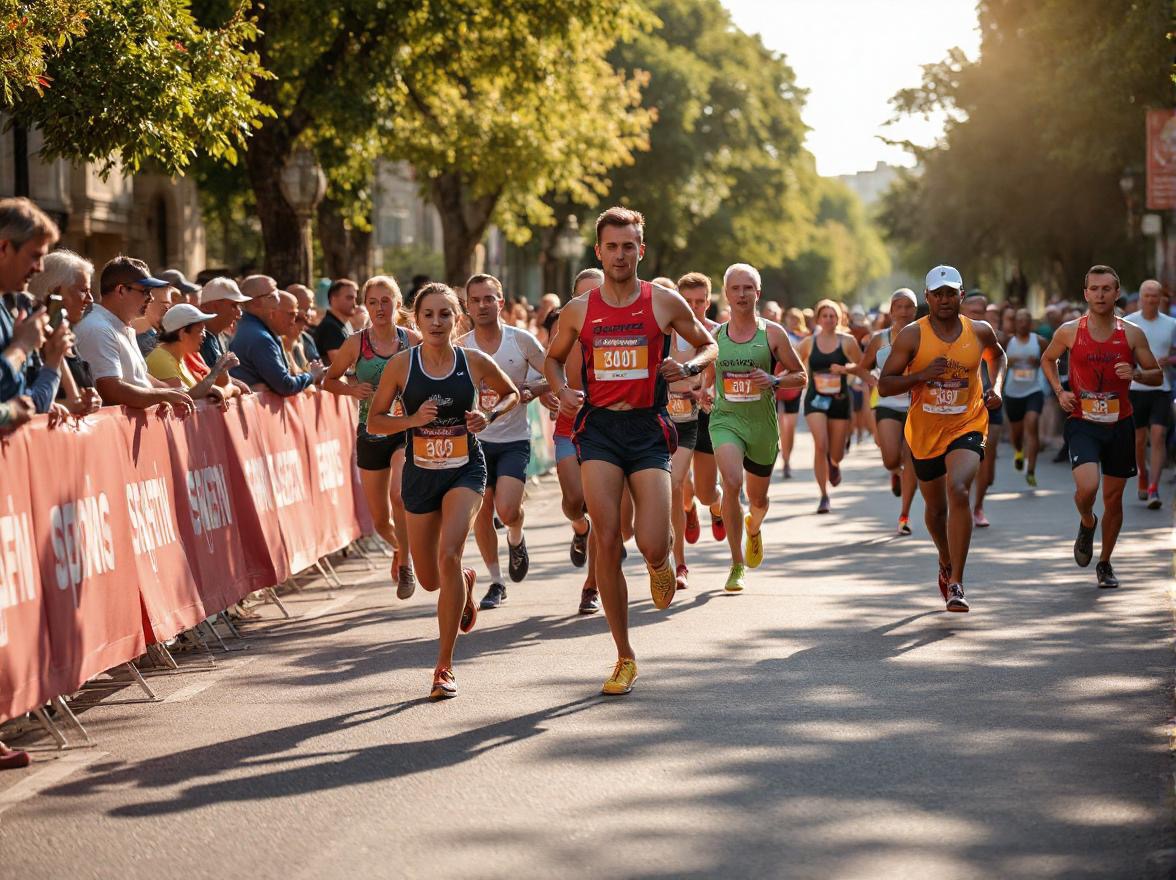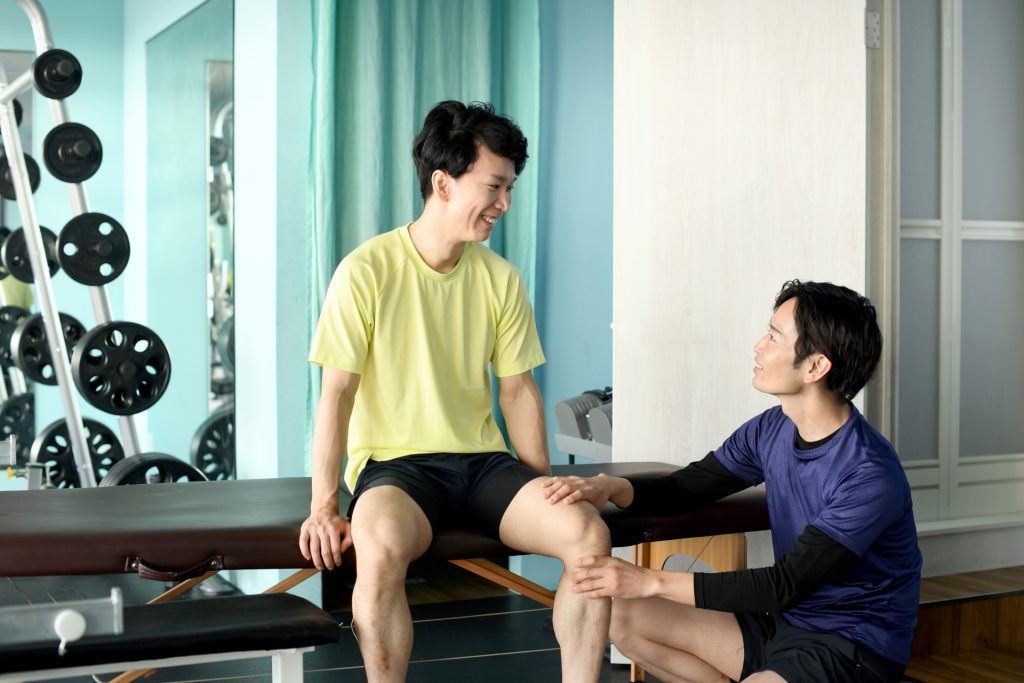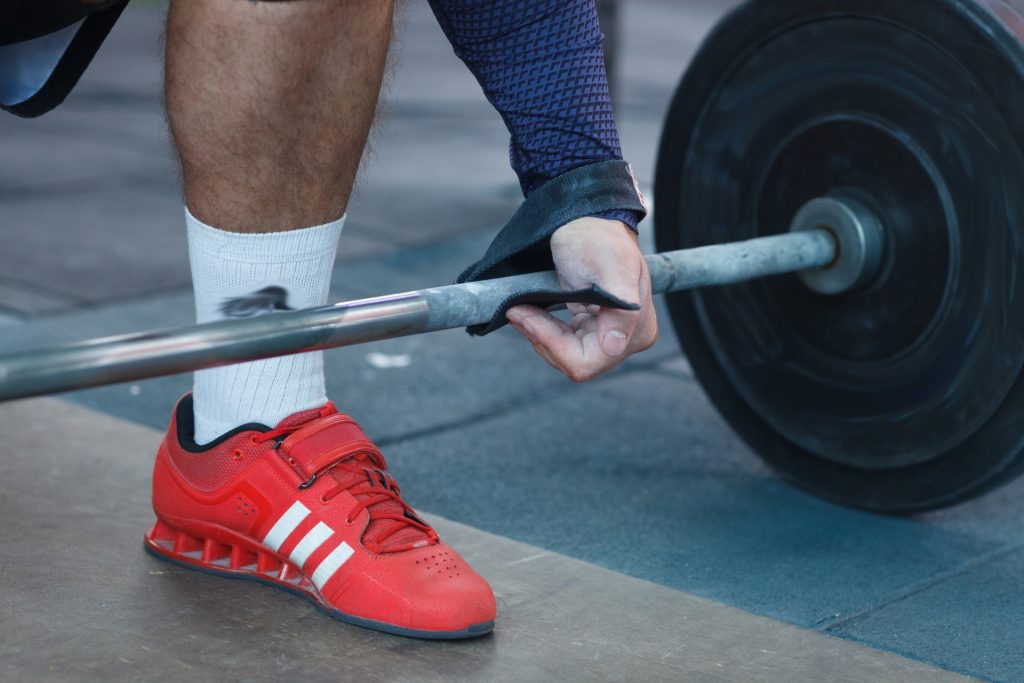
Recent research has revealed that genes have a significant impact on our athletic performance and health status. Genetic factors related to endurance, muscle strength, exercise habit formation, and even disease risk are being uncovered, and it is hoped that this knowledge will lead to more effective training methods and health management. This article details the relationship between genes, exercise, and health based on the latest research.
1. relationship between genes and athletic performance
1-1. Endurance and Genes
In endurance sports such as marathon running and cycling, Visual maximal oxygen uptake (VO2max) is considered one of the most important factors influencing performance. Research indicates that there is approximately 50% genetic influence on VO2max, suggesting that specific genetic polymorphisms are responsible for individual differences in endurance performance.
Of particular interest are the ACTN3 and PPARGC1A genes.
- ACTN3 gene: This gene is involved in fast-twitch muscles (muscles that exert instantaneous force), but it has been reported that the “X/X type” (deletion of function) is more common in endurance athletes. People with this type tend to have a predominance of slow-twitch muscles (muscles that exert endurance) and may be more suitable as long-distance runners.
- PPARGC1A gene: this gene promotes mitochondrial biogenesis and contributes to endurance. People with certain variants tend to be better adapted to aerobic exercise.
📖 References:
- Relationship between ACTN3 gene and sports performance
- PPARGC1A and its relevance to endurance training
1-2. Instantaneous and genetic
In power sports such as short-distance running and weightlifting, the percentage of fast-twitch muscle fibers is important. It is known that the “R-type” of the ACTN3 gene is associated with the development of fast-twitch muscle fibers.
- ACTN3 R-type (R/R type): Increases the contractility of fast-twitch muscles and facilitates explosive power.
- ACTN3 X-type (X/X): Weak fast-twitch muscle function, favoring endurance improvement.
Thus, since aptitudes vary even for the same sport, genetic information may be used to select the best training methods.
📖 References:
- Relationship between R-type of ACTN3 gene and short-distance running
2. Relationship between genes and health
2-1. Obesity and Genes
Genetic as well as environmental factors are involved in obesity. In particular, the FTO gene is known to increase the risk of obesity.
- It has been reported that individuals with mutations in the FTO gene are prone to accelerated fat accumulation and a tendency to overeat. However, it has also been suggested that exercise can reduce the effects of FTO, and regular physical activity is important.
📖 References:
2-2. Diabetes Risk and Exercise
The TCF7L2 gene has been reported to be involved in the development of type 2 diabetes. People with certain variants of this gene are prone to increased insulin resistance, which increases the risk of diabetes.
However, exercise can improve insulin sensitivity and may reduce genetic risk.
📖 References:
- TCF7L2 gene and diabetes
3. Training Strategies Using Genetic Information

In recent years, personalized training using genetic testing has been attracting attention. By knowing one’s own genetic type, an optimal exercise program can be designed to maintain health and improve athletic performance.
For example, people with ACTN3 X/X type are suited for endurance sports and will benefit from training mainly in marathons and cycling. On the other hand, people with type R/R will be able to maximize their performance by combining strength training.
Furthermore, individuals with the FTO gene mutation, which carries a high risk of obesity, can prevent fat accumulation by combining aerobic exercise with strength training.
4. Genes and the formation of exercise habits
Genes do not just affect athletic performance and health status; they are also involved in the “motivation to keep exercising”. This is thought to be related to the dopamine receptor gene (DRD2) and the BDNF gene.
4-1. DRD2 Gene and Motivation for Exercise
Dopamine is a neurotransmitter responsible for “pleasure” and “motivation,” and one of its receptors, the DRD2 gene, influences the formation of exercise habits.
- People with certain variants of the DRD2 gene are more likely to experience pleasure from exercise and to exercise continuously.
- On the other hand, people with another variant may find exercise less enjoyable and less habit-forming.
For this reason, those who have difficulty continuing to exercise may find it easier to develop an exercise habit by adapting their own genetic characteristics (e.g., by introducing group training and reward systems).
📖 References:
4-2. BDNF gene and post-exercise mood improvement
Brain-derived neurotrophic factor (BDNF) is a protein that promotes brain plasticity and neural growth and is involved in the “mood elevation” after exercise.
- Individuals with certain mutations in the BDNF gene may have difficulty obtaining positive mood enhancement from exercise.
- Conversely, those with another variant feel a strong sense of well-being after exercise and are more likely to develop an exercise habit.
Thus, different genes have different degrees of enjoyment of exercise, and an appropriate approach can improve the rate of exercise retention.
📖 References:
5. Genes and Recovery Capability

Genetic factors are also involved in post-exercise recovery (recovery), particularly the IL6 and COL5A1 genes.
5-1. IL6 gene and inflammatory response
IL6 (interleukin-6) is a cytokine that regulates inflammation and affects muscle soreness and recovery rate after training.
- People with certain variants of the IL6 gene tend to have a stronger inflammatory response and take longer to recover after training.
- On the other hand, those with a milder type of inflammatory response are able to repair muscles more quickly and train more frequently.
For this reason, people with the slow recovery genotype may be able to reduce post-exercise damage by stretching and being aware of proper nutrition (omega-3 fatty acids and antioxidants).
📖 References:
5-2. COL5A1 gene and tendon and ligament strength
The COL5A1 gene is involved in collagen production, which affects the strength of tendons and ligaments.
- People with certain variants of the COL5A1 gene have more flexible tendons and ligaments and are less prone to injury.
- Conversely, another type of person has stiff tendons and is at high risk for Achilles tendonitis and ligament injuries.
Therefore, people who are genetically prone to injury are advised to warm up and cool down thoroughly and protect their joints with stretching and strength training.
📖 References:
- COL5A1 and Ligament Injury Risk
6. Potential for personalized training using genetic information
Advances in genetic testing technology have made it easier to know one’s genetic characteristics. This can be used to develop more effective training plans.
For example, the following training strategies can be used based on genetic test results
| gene | affect | Recommended Training Strategies |
| ACTN3 (R/R type) | Instantaneous power improvement | Strength training, high-intensity interval training (HIIT) |
| ACTN3 (X/X type) | improvement in one’s endurance | Long distance running, endurance training |
| FTO | Increased risk of obesity | Aerobic exercise + strength training, diet control |
| IL6 | Recovery Delay | Stretching, consumption of anti-inflammatory foods |
| COL5A1 | Ligament Injury Risk | Flexibility training, form improvement |
By utilizing such data, exercise programs optimized for individual characteristics can be implemented, enabling more efficient performance improvement and health management.
📖 References:
- Gene-based training strategies
7. Genes and Age-Related Changes in Athletic Performance

Age-related muscle weakness and endurance loss are also associated with genetic factors. In particular, the MYO18B and KLOTHO genes have been implicated.
7-1. MYO18B gene and sarcopenia
Sarcopenia (age-related loss of muscle mass) leads to falls and reduced quality of life in the elderly. Studies have reported that certain variants of the MYO18B gene may increase the risk of developing sarcopenia.
- People with the risk variant of this gene are prone to accelerated muscle mass loss with age.
- Muscle training and a high-protein diet may slow the progression of sarcopenia.
📖 References:
7-2. KLOTHO gene and delayed aging
The KLOTHO gene is known as the “longevity gene” and is believed to slow age-related cognitive decline and muscle weakness.
- People with certain KLOTHO variants may have slower age-related muscle weakness and a longer healthy life span.
- Aerobic exercise is especially recommended because exercise can promote KLOTHO gene expression.
📖 References:
- KLOTHO gene and aging
8. Nutrition Strategies Using Genetic Information
Proper nutrition is essential to maximize the effects of exercise. Since different genes have different metabolic efficiencies of nutrients, adopting a dietary strategy based on genotype can help you build a more efficient body.
8-1. Caffeine Sensitivity and Genes
Caffeine is known to help improve endurance and maintain concentration, but its effects vary depending on the CYP1A2 gene.
- People with the “fast metabolizing” form of CYP1A2 break down caffeine faster, and caffeine intake prior to exercise leads to better performance.
- People with “slow metabolizers ” may experience side effects such as insomnia and increased heart rate if they do not adjust their intake because of the long-lasting effects of caffeine.
📖 References:
8-2. Vitamin D and Muscle Strength
Vitamin D plays an important role in bone health as well as muscle strength, and polymorphisms in the VDR gene (vitamin D receptor gene) have been shown to produce differential effects of vitamin D.
- People with certain variants of the VDR gene are less efficient at utilizing vitamin D and benefit from supplementation.
- Conversely, the type of person who can utilize vitamin D efficiently may be able to synthesize sufficient amounts simply by exposure to sunlight.
📖 References:
9. The Future of Genetic Analysis and Personalized Health Care

As genetic analysis technology evolves, personalized health management and training strategies are becoming increasingly important.
- Genetic testing for athletes: An increasing number of professional athletes are designing training programs based on their own genetic characteristics.
- Genetic testing services for the general public: Genetic testing services are becoming widespread in Japan and are used to optimize exercise aptitude and diet.
9-1. Personalized Training Case Studies
For example, if a track and field athlete undergoes genetic testing and is found to have the ACTN3 gene as type X/X (endurance-enhancing type), optimizing his or her training program for endurance may improve athletic performance.
In some cases, people with the FTO gene mutation who are at risk for obesity are able to control their body fat gain and maintain a healthy body shape by following an individualized nutrition plan.
📖 References:
10. Cautions on the use of genetic information
Genetic testing is a useful tool in developing optimal health strategies for individuals, but there are some caveats.
- Genes are not everything
- Environmental factors (diet, exercise habits, sleep) have a significant impact on health and performance.
- Environmental factors (diet, exercise habits, sleep) have a significant impact on health and performance.
- Confirmation of scientific evidence
- The relationship between genes, exercise, and health is still a work in progress.
- It is important to base decisions on reliable research data, not just personal experiences.
- Ethical and privacy issues
- Genetic data is highly confidential and requires appropriate management.
- Guidelines need to be developed to prevent discrimination and prejudice based on genetic information.
📖 References:
- Ethical Issues in Genetic Data
11. Genetic Analysis and the Future of Competitive Sports

The use of genetic analysis in the field of sports has gone beyond mere research and is increasingly likely to help improve actual athletic performance and prevent injuries. Especially among top athletes, optimization of training plans based on genetic information is underway.
11-1. Prediction of sports aptitude by genes
In recent years, more and more studies have been conducted to predict which sports a person is suited to based on his or her genotype. For example, athletes with the R/R genotype of the ACTN3 gene are suited to power sports such as short-distance running and weightlifting, while those with the X/X genotype are suited to long-distance running and endurance sports.
The ACE gene (angiotensin-converting enzyme gene) has also been found to be associated with sports aptitude.
- ACE I/I type (endurance-enhancing type): long-distance running, soccer, mountain climbing, etc.
- ACE D/D type (for power sprinting): short-distance running, weightlifting, sprint play in soccer, etc.
- ACE I/D type (balanced type): adaptable to many sports
📖 References:
- ACE Gene and Sports Performance
11-2. Injury risk prediction and prevention
By utilizing genetic information, the risk of injury can be predicted in advance and appropriate preventive measures can be taken.
For example, the COL1A1 (collagen gene) and COL5A1 genes affect ligament and tendon strength, and people with certain variants have been found to be at higher risk for Achilles tendon rupture and anterior cruciate ligament (ACL) injury.
By knowing this kind of information in advance,
- Introduce stretching to increase flexibility
- Wearing taping or supporters
- Strength training to strengthen joints
and other preventive measures.
📖 References:
12. Genes and mental stress tolerance

Mental factors also play a major role in sports performance. In particular, resistance to the pressure of competition and mental resilience are associated with genetic factors.
12-1. COMT gene and stress tolerance
The COMT gene encodes an enzyme involved in the breakdown of the stress hormone dopamine. Variants of this gene have been reported to differ in stress tolerance.
- Warrior: people with certain variants of the COMT gene are more likely to perform well under stress.
- Worrier: People with another variant are less susceptible to pressure, but are better suited to detailed work and sustained effort.
Knowing these genetic traits allows us to customize our mental control methods during competition.
📖 References:
12-2. OXTR gene and team sport aptitude
The OXTR gene (oxytocin receptor gene) is involved in social behavior and empathy and may influence aptitude for team sports.
- People with certain variants of OXTR are highly cooperative and good team players.
- Those with another variant tend to be better suited for individual competitions.
This information allows for the selection of competitions and the development of training environments that are appropriate for aptitude.
📖 References:
13. Practical Application of Genetic Information and Challenges
Sports science and health care using genetic information is developing rapidly, but many challenges still exist.
13-1. Establishment of scientific basis
Although current research suggests a link between genes and athletic performance, it is not 100% certain and multiple factors must be considered as relevant.
- Even with the same genotype, results vary greatly depending on environmental factors (training, diet, and lifestyle).
- It is important not to overconfidently trust the results of genetic testing, but to take a comprehensive approach to health care.
13-2. Privacy and Ethical Issues
Genetic information is one of the most sensitive types of personal data and can lead to genetic discrimination and unfair evaluation if handled improperly.
- Genetic data must be strictly controlled.
- Ethical considerations must be made to ensure that athletic selection is not limited by “sport aptitude determination” based on genetic information.
📖 References:
- Ethical Issues in Genetic Information
15. Future Training and Medicine Using Genetic Information

With the evolution of genetic analysis technology, personalized training and personalized medicine are becoming a reality. In the future, sports science and health management using genetic information will be further developed to enable more effective training and disease prevention.
15-1. AI trainer utilizing genetic information
In recent years, personalized fitness using artificial intelligence (AI) has been attracting attention.
- AI designs optimal exercise programs based on genetic data.
- Provide real-time feedback to improve the quality of training.
- Diet and recovery advice can also be optimized based on genotype.
📖 References:
- Potential for training using AI and genetic information
15-2. Gene Therapy and Sports Medicine
In the field of sports medicine, gene therapy may help athletes recover from injuries and improve performance in the future.
- Gene therapy to promote muscle regeneration is being studied and may speed recovery from sports injuries.
- Attempts to reduce chronic inflammation and fatigue by regulating specific gene expression.
📖 References:
16. Widespread use of genetic analysis and its impact on society
The widespread use of genetic analysis could have a significant impact not only on sports, but also on health care and lifestyle choices.
16-1. Expansion of genetic testing services for the general public
In recent years, an increasing number of services have made genetic testing readily available. This allows individuals to learn about their constitution and health risks and make appropriate exercise and dietary choices.
- Knowing sports aptitude enables efficient training.
- Identify the risk of genetic diseases and take early preventive measures.
📖 References:
16-2. Genetic Information and Social Issues
While genetic analysis is becoming more widespread, social issues such as privacy protection and discrimination based on genetic information are also emerging.
- Legislation is needed to prevent genetic discrimination in insurance and employment.
- A system for the secure management of personal genetic information must be established.
With the appropriate use of genetic information, a future in which everyone can make healthier and more optimal lifestyle choices will become a reality.
📖 References:
- Ethical Issues in Genetic Data
16-3. Genetic Information and Future Health Care
Advances in genetic analysis will further develop preventive medicine and personalized healthcare in the future.
- Development of custom supplements based on an individual’s genotype.
- Health monitoring by linking wearable devices such as smartwatches with genetic information.
Appropriate use of genetic information will enable disease prevention and optimal health management, leading to a higher quality of life.
17. summary
Genetic information influences athletic performance, health, and even motivation and injury risk. The latest research suggests that training and nutritional management based on genotype can be effective. Future developments in genetic analysis will further advance personalized health management and sports strategies. However, it is important to use genetic information appropriately, while taking privacy protection and ethical issues into consideration.


